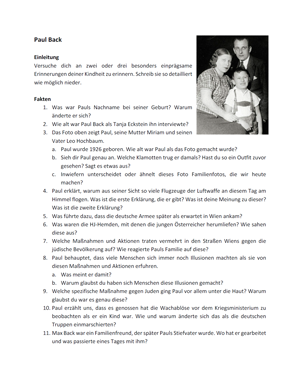A report by
Paul Back
Paul Back reports on how he experienced the Nazi takeover in Austria when he was twelve years old. Here you can read about how Paul initially found the Wehrmacht uniforms and marches very fascinating.

“And now, all of a sudden, we were not allowed to sit on the park benches any more.”
“On 12th March 1938, I saw entire formations of airplanes that clouded the sky.
First of all, the Nazis wanted to demonstrate their power, and, second, they really had to transport things in order to do what they had come to do. You could already see people in uniforms and youths in HJ-shirts. Those were Austrians; the Germans had not yet arrived in Vienna. You see, they didn’t come straight to Vienna, as they were stopped by cheering crowds on their way here. At first the Wehrmacht curried favor with the Viennese with food – with field kitchens at Heldenplatz.
My grandmother’s apartment became kind of a family news center. The whole family constantly followed the events, and at first there was no panic. Only much later did they get anxious, when measures against Jews were announced and actions such as street washing, molestation and verbal abuse commenced. We heard of people being kicked, attacked or taken away, but at the time people were probably still deluding themselves. We knew that the situation was serious, but we didn’t know how serious it was yet to become.
“We knew that the situation was serious, but we didn’t know how serious it was yet to become.”
One of the few measures that really got under my skin were the signs on park benches reading ‘Only for Aryans’ and ‘Not for Jews.’ I had often gone for walks with my mother or my cousins and we used to go to the parks and play there. And now, all of a sudden, we were not allowed to sit on the park benches any more.
I was impressed by uniforms, and even before the Nazis, when I was a child, I used to run to the war ministry at Stubenring because once a week there was a changing of the guard with the playing of taps there. I liked this march music and really enjoyed it. When the Germans marched in, it was a bit scary, but there were people in uniform, moving around with a military band, and that highly impressed me; I liked it and loved to run along behind them.
The Hachshara courses had to be cancelled. Max Back [the interviewee’s stepfather] was then working somewhere else in the Jewish community, and one day he was also attacked and beaten. I think that happened in front of the synagogue on Seitenstettengasse. Back then there were plenty of people who enjoyed wreaking havoc. Around the corner from my grandmother’s apartment there were prayer houses, but I don’t know that there were any serious attacks. However, the neighborhood was buzzing with Hitler Youth and BDM groups.”
Small photo above:
Paul Back with his parents Miriam and Leo
Photo taken in:
Vienna, Austria (1935)
Interviewee:
Paul Back
Year of interview:
2002
Interviewer:
Tanja Eckstein
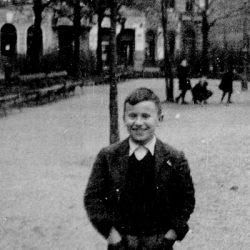
Learn more about Paul Back?
You can find the whole biography of Paul Back here on the Centropa website.
Furthermore, you can find many more pictures here in the Centropa photography database.
Teaching Materials
We’ve come up with suggestions on how students can engage in class with the story of Paul Back.
Under this link here is a PDF document with various questions and exercises.
We look forward to feedback on our materials – just write us a message via the contact form!
Resources
Want to learn more about the November Pogroms?
The reports and films featured on this site are just a glimpse into the multi-faceted history of the November Pogroms in 1938. We’ve put together an extensive directory of resources to help you deepen your knowledge.
The image in the background shows a destroyed shoe store in Vienna on November 10, 1938
(Photo: Wiener Library/DöW F. Nr. 6392)
More reports
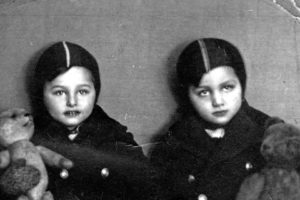
Julius Chaimowicz
Julius Chaimowicz, who was only six years old at the time of the November pogroms in 1938, reports how negligence proved to be a stroke of luck for his family.
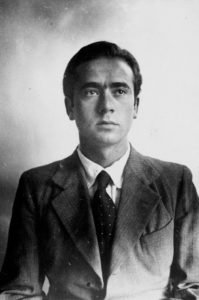
Wilhelm Steiner
Wilhelm Steiner was eighteen years old in November 1938 and had to watch how his family’s business was plundered. When he wanted to intervene, he was accused of insulting Hitler and arrested.
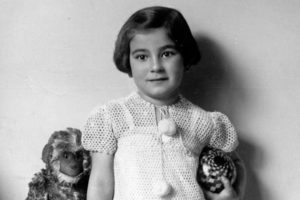
Gerda Feldsberg
Gerda was eight years old when she was suddenly attacked on the playground after the Anschluss by other children – and their parents.
